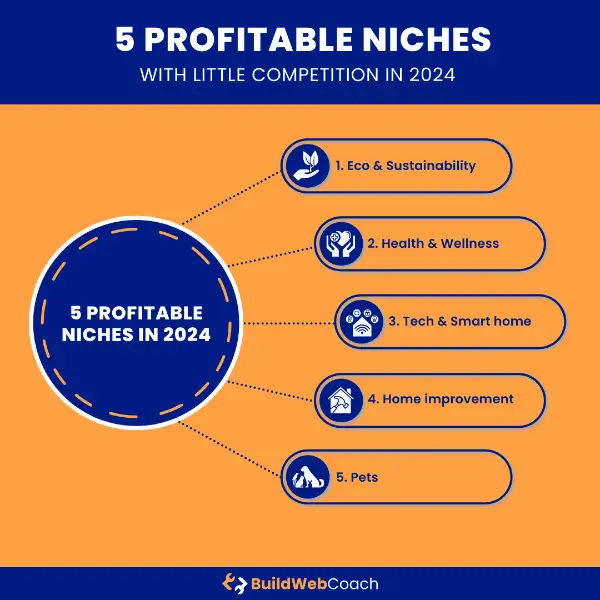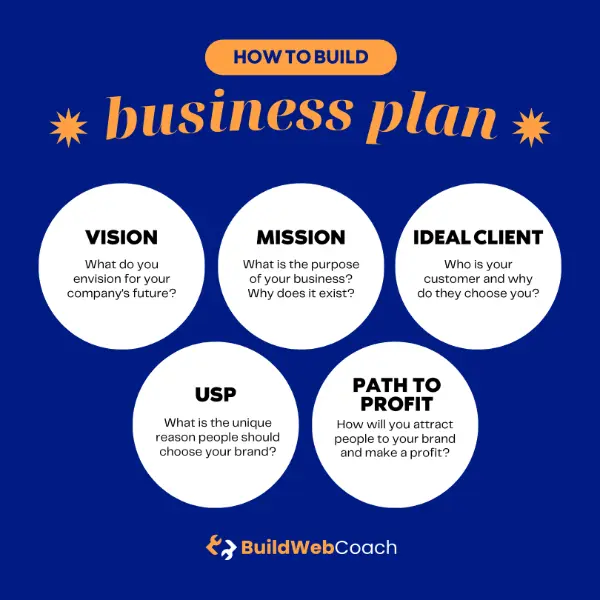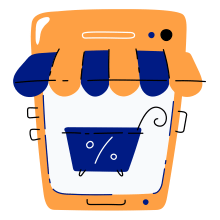Last Updated on January 30, 2024
Commercial success in the past hinged on finding a location with plenty of foot traffic, shouting louder than your competitors, and operating with lower overhead costs. Things are no longer that simple in the modern world, with everyone able to access thousands of shopping portals via smartphones.
Geographical location has taken a back seat to online accessibility and convenience. Home-based stores can be operated from the kitchen table with minimal overheads and even without the expense of carrying inventory.
The COVID-19 pandemic catalyzed the growth of e-commerce and made it even more popular. Millions of consumers locked down in their homes were forced to purchase online, whether they liked it or not. Many who were previously unfamiliar with the process fell in love with the ease and convenience and have never looked back.
Digital sales growth has been expanding ever since and shows no signs of slowing down:
- Statista reports that global e-commerce sales reached $4.28 trillion in 2020. [source]
- Digital Commerce reports that digital sales have experienced a 7.7% year-over-year growth since 2009. [source]
- M-commerce (mobile phone commerce) is growing: In 2020, mobile purchases accounted for 73% of all e-commerce sales worldwide. [source]
- Amazon alone accounted for 45% of all online sales in the United States in 2020. [source]
- 67% of millennials and 56% of Gen Xers prefer shopping online rather than in-store. [source]
How to Start an Online Store in 5 Easy Steps (Summary)
Our guide will show you how to start an online store through the easy steps and strategies to help you create and grow a thriving e-commerce business.

Time:
ca. 8 hours
Tools Needed:
A computer, tablet or laptop.
Cost:
min. 36 USD
Things Needed:
Especially your time and smile.
5 Steps to Making Your Professional Online Store:
Step 1: Choose Niche and Create Business Plan | Look at step 1
When choosing what to sell online, the world is your oyster, and a business plan is a roadmap to your success.
Step 2: Decide on a Business Structure | Look at step 2
Starting any business, including an online one, will require choosing a business structure.
Step 3: Build Online Store | Look at step 3
In this step, you must choose the right e-commerce platform to optimize your website for success. You then build an online store on this foundation.
Step 4: Add Products and Product Listings | Look at step 4
How you create your product listings is critical to attracting customers and driving sales.
Step 5: Connect a Payment Gateway | Look at step 5
You will need someone way for your customers to pay you, which means connecting a payment gateway to your store.
Are you ready to carve your slice out of the ever-growing e-commerce pie? This guide will show you everything you need about the key steps and strategies to help you create and grow a thriving e-commerce business.
- How to Start an Online Store in 5 Easy Steps (Summary)
- Choose Your Niche and Create Your Business Plan
- Decide on a Business Structure
- Building Your Online Store
- Combining the Power of WooCommerce and WordPress
- Tips for Adding Products and Product Listings
- Connect a Payment Gateway
- Are You Ready to Launch Your eCommerce Empire?
- Frequently Asked Questions
- Need more inspiration on creating websites?
Choose Your Niche and Create Your Business Plan
The world is your oyster when choosing what to sell online. You can create and sell digital products, services, or physical goods. Some strategy is required in selecting a niche, as not all will guarantee a profitable enterprise.
1. What Makes a Good Niche?
You should hone in on three major elements when selecting a niche: making money (profitability), how easy it is for people to find your product online (searchability), and do you love it (passion).
Profitability: Your goal is to make money, so you’ll need a niche where money can be made. Will you have manufacturing costs, or will you purchase products at wholesale? What will be your shipping expenses? You must factor in all your costs and a decent profit margin when pricing a product to ensure your online store has growth potential.

Searchability: Your best bet is a niche with in-demand products that people are searching for online. Use SEO tools to unearth trending products with keywords that match your niche. You can always use paid ads to help you attract traffic, but organic traffic from the search results is always the most lucrative because you don’t have to keep paying for it.
Passion: A niche you are passionate about is not the highest priority, but it’s still essential. Selling products in a niche in which you are passionate will help keep you motivated. Plus, your passion will show in your marketing, which help establish you as a trusted authority in your industry.
2. Perform Market Research
An in-depth analysis of your customers, competitors, and the marketplace is critical to the niche selection process. Check out the industry trends to learn what your customers are into and discover the strategies your rivals are using to win customers. This study will give you inside information on what products to choose, how much you need to charge, and how you should be marketing them. You may also discover untapped opportunities and market gaps you can take advantage of that your competitors haven’t yet discovered.
3. Define Your Target Audience
This step is perhaps as important as choosing your niche. Your target demographic will determine your brand identity, the way you communicate with your prospects and customers and shape your marketing strategy so it resonates with their lifestyle. Analyzing similar businesses’ customer data will show you what people want. By understanding your potential customers’ behaviors, likes, and dislikes, you can more effectively shape what you’re selling and how you promote it.
4. Create a Business Plan
A business plan is a roadmap to your success. It maps out your goals, strategies, and profit predictions to help steer your online shop. Good business plans will include product offerings, market analysis, target markets, marketing strategies, operational plans, and financial projections. Operating without a plan will cause you to lose focus, make ill-informed decisions, and waste profits on ineffective advertising.
- Do a SWOT analysis (Strengths, Weaknesses, Opportunities, and Threats) to assess different niche and product ideas. A SWOT analysis is your secret weapon, giving you the upper hand over competitors and flagging potential obstacles.

- To spot the voids in the market, check out social media trends, scour Google Trends, and sift through Amazon’s and eBay’s top sellers. Look for areas where customer demands are not fulfilled within the popular product categories.
- To cater to your customers effectively, you must understand their wants, likes, interests, and what makes them tick. Knowing your customers – their likes, dislikes, and what they want – can help you tailor your products and marketing plans to meet their needs perfectly.

Remember, once you’ve selected a niche, you’ll still need to closely watch shifting market trends, as your customers’ needs and wants can change on a whim. You’ll need to be ready to pivot and stay in profit.
Decide on a Business Structure
Starting any business, including an online one, will require choosing a business structure. A business structure is a business’s legal and organizational framework that dictates how it operates. It also determines how the business is owned, managed, and taxed and the legal liability for the business owner(s).
Different types of business structures include:
- Sole Proprietorship: This is the most straightforward type of business structure. In this structure, you and your business are legally and financially linked. While it is easy to set up, remember you will be held personally liable for all debts and legal issues.
- Limited Liability Company (LLC): An LLC is a popular choice for online due to its personal liability protection. One reason LLCs are popular for small businesses is it allows for the separation of personal and business assets, reducing many of the risks of starting a business. LLCs are relatively quick to set up, inexpensive, and offer various business tax benefits.
- Partnership: A partnership structure may be suitable if you are starting your online store with one or more business partners. In a partnership, you will need to sign a partner agreement that outlines each partner’s roles, responsibilities, investments, and rights. It is essential to have a clear understanding of the partnership agreement to avoid any conflicts in the future.
- Corporation: Corporations are a more complex business structure that includes shareholders and employees. There are different formats of corporations, such as C corporations and S corporations. Corporations offer limited liability protection and can be initiated by an individual or a group of people. However, setting up a corporation involves more formalities and legal requirements.
Building Your Online Store
A successful e-commerce enterprise requires careful planning and execution. This section reveals the steps to create an ecommerce business, from choosing the right e-commerce platform to optimizing your website for success.
1. Choose Your eCommerce Platform
Tons of e-commerce platforms like Shopify and Etsy have sprung up to support the growing interest in e-commerce. They have different features, pricing, and options, so choose carefully. While affordability and user-friendliness are essential considerations, a platform that can grow with your operation is also highly desirable. Switching platforms after spending months of blood, sweat, and tears developing your business can be momentous.
Here are a few of our favorite ecommerce providers to consider. We like platforms that have been around for a while as they have experience and expertise behind them you can rely on.
- Squarespace: A favorite amongst web designers because of its elegant templates, drag-and-drop website builder, and built-in marketing tools.
- Shopify: Popular for dropshipping stores and has a range of plans for every budget and plenty of premium themes to serve as a foundation for your ecommerce website.
- WooCommerce: This platform is for you if you demand the ultimate customization and control. WooCommerce is a powerful WordPress plugin, meaning you aren’t tied to a single hosting service. Any host that allows WordPress, such as Hostinger, GoDaddy, or Hostgator, is a potential platform for hosting your e-commerce empire. If you are concerned about the cost to start an online store, WooCommerce and WordPress are both free. Your only out-of-pocket expense will be the hosting.
2. Source Your Products
Regardless of the business model, every eCommerce venture will need products for the online store. Consider the production or acquisition process if you plan to create or resell your products. For manfactured goods, options include wholesaling, white-labeling, or retail arbitrage. If you prefer not to manage inventory, dropshipping is a popular option where you partner with suppliers who handle fulfillment.
3. Create Your Brand Name and Brand Assets:
Branding is all about ensuring your business is recognizable. Think Nike, Amazon, and Coca-Cola for a good idea about what branding can do for your business. Choose a domain name (your website’s URL or online address) that reflects your brand and create a logo that lets people know what your business is all about. These days, you don’t even need an expensive graphic designer. A free tool like Canva can help you with its logo creator, and it will even assist you in choosing your brand colors to ensure a cohesive design throughout your website.
4. Create Your E-Commerce Website
When you’ve settled on a platform, it’s time to start building your store. Steps will vary depending on your goals. In general, the procedure will resemble the following:
- Creating an account on the chosen platform.
- Choosing a domain name for your website.
- Selecting a template or theme that aligns with your brand.
- Customizing your homepage and other web pages.
4. Optimize Your Site for the Search Engines
Search engine optimization, or SEO, is a continual process you will have to perform for the life of your store. In simple terms, SEO is all about ensuring the search engines understand the content of your site so they can rank it accurately. Getting all your SEO ducks in a row from the beginning will make subsequent efforts much more straightforward.
Target relevant keywords for each product page, optimize product titles and descriptions and add alt text to images. Stick to a logical structure that is intuitive and user-friendly. You want to make it easy for shoppers to navigate your site and make purchases. The better the user experience, the more likely they will return to buy more and leave great reviews.
5. Launch and Market Your Online Store
Now that your store is ready and your products are listed, you are all set for launch. The next step is to publish your website. If you use a third-party marketplace, orders will start rolling in when customers discover your products. Those who have invested in their own website will need to devote resources to marketing to drive traffic and sales.
You can use paid advertising to boost traffic immediately while waiting for your SEO efforts to kick in. Take advantage of Google Ads, an excellent way to get your new online store off to a flying start. Consider a course in online paid advertising or hire an expert to ensure you aren’t wasting money on non-performing keywords. Microsoft also has a version called Bing Ads. It’s not as popular, but advertising on this platform is often more affordable.
Remember the power of social media marketing on platforms like Facebook and Instagram. Follow others in your niche and build your following with informative, engaging posts that show you as an authority. Build your email list from the beginning. Email marketing is still one of the most lucrative but affordable sources of traffic and sales.
Combining the Power of WooCommerce and WordPress
While plenty of great e-commerce platform providers can help you launch your e-commerce online business, a WooCommerce and WordPress combination is the most cost-effective and robust solution.
For starters, both platforms are available for free. Your only cost will be your domain name registration and hosting. You get enough power out of the box to power your store, but tons of add-ons and plugins further amplify your ability to satisfy and delight your customers.
Of course, great power comes with a learning curve, but it’s not as steep as you might think. With a few good tutorials and a spare weekend, you can learn enough to build a bustling online marketplace that can grow with your expanding skillset.
WordPress is the backend content management system allowing you to add essential web pages to your site like TOS pages (Terms of Service), privacy pages, sales landing pages, a blog, and whatever else you need to serve your customers better.
WooCommerce makes inventory management easy. You can classify your products into different categories but also set their prices, keep a close eye on stock levels, and offer an array of product variations like sizes or colors.
Accepting online payments is a breeze with WooCommerce because it plays nicely with popular options like PayPal and Stripe, but it can also be configured with Amazon Pay, Apple Pay, Fondy, Skrill, and Authorize.net. We are sure more will come on board as WooCommerce continues to grow.
No e-commerce store is complete without analytics, and WooCommerce doesn’t disappoint. Deep dive into your shop’s performance by spotting trends and learning where improvements could be made without leaving your site. Analytics are the key to making strategic decisions based on data rather than guesswork.
If you ever get stuck, WooCommerce and WordPress have active and engaged communities ready to help you. There are also paid support options for premium service when waiting for a reply or figuring it out yourself is not an option.
WooCommerce is essentially a no-cost, user-friendly plugin for WordPress sites that lets you kick start your online store with versatile product management, payment gateways like PayPal and Stripe, high customization options including themes and extensions, in-depth analytics to track sales trends, scalability as per business growth, and an active community ready to lend a hand.
Be sure to check out our other guide on how to build a website from scratch to learn more about installing WordPress and plugins like WooCommerce.
Tips for Adding Products and Product Listings
How you create your product listings is critical to attracting customers and driving sales. Use these tips to ensure your product listings speak to your audience and resonate with their needs and wants:
- Use High-Quality Images: Good-quality product images are essential to showcasing your products effectively. Avoid blurry or poorly lit images. Use a professional photographer to capture high-quality product photos if the budget allows. If money is tight, you can use your smartphone and free photo editing tools to enhance the images. Including multiple images that show different angles or details can also help improve customer trust and engagement.
- Write SEO-Friendly Descriptions: Consider search engine optimization (SEO) for attracting organic traffic to your store. Target keywords relevant to your product and incorporate them naturally into your descriptions. Customers will find your products when searching online and the keywords will make the link more “clickable.” Accurate product titles and descriptions will also make your product listing more clickworthy.
- Write to Your Audience: Tailor your product descriptions to your target audience. Consider what your customers need to know to feel confident in purchasing. Highlight the relevant benefits and features that will convince them this product is a must-have. If you want to really connect with people, speak to them in a way that genuinely speaks to their needs and desires. Use language that resonates with them on a personal level, and watch as your message hits home like never before.
- Address Objections: Anticipate common questions or objections customers may have and address them in your product descriptions. For example, if customers are concerned about sizing, provide a size chart or detailed measurements. If there are any allergen concerns, include relevant information about ingredients. Proactively addressing these concerns will help build trust and confidence in your products.
- Make Text Easy to Scan: Customers often skim product descriptions to find necessary information quickly. Make your text easy to scan using short paragraphs, bullet points, subheadings, and bolded text. These features make it easier for customers to find relevant information and are also great for SEO.
- Help Customers Visualize: Since customers can’t physically touch or try on your products online, it’s essential to help them visualize using your product. Include details that help customers see themselves using the product and understand how it will improve their lives. This can include listing the materials used, providing size charts, and using descriptive language to paint a picture of the product’s benefits.
Connect a Payment Gateway
You will need someone way for your customers to pay you, which means connecting a payment gateway to your store. A payment gateway is a bridge between a financial provider and the customer. Once the gateway is set up, your customers will pay through the financial provider. The provider then transfers the funds into your bank account after taking a small percentage as a processing fee.
PayPal and Stripe are popular payment gateways you have probably heard of, but there are many more available. The steps to attach them to your website will be similar:
- Research and Choose a Payment Gateway: Consider factors like transaction fees, supported currencies, integration options, and security features when selecting a payment gateway that suits your business needs.
- Set Up an Account: Sign up for an account with your choice in payment gateway provider. Add the required information and complete the verification process.
- Configure Payment Settings: Access the settings or dashboard of your online store platform. Look for the payment settings section, where you can connect your payment gateway. Depending on the platform you are using, this section may be labeled differently, such as “Payments,” “Payment Options,” or “Checkout Settings.”
- Enter API Keys or Credentials: To connect the payment gateway, you must enter the API keys or credentials provided by the provider. These keys create a secure communication conduit between your site and the payment gateway, keeping transactions safe and private.
- Select Accepted Payment Methods: Choose the payment methods you want to offer your customers. Standard options include credit cards, debit cards, digital wallets (such as PayPal or Apple Pay), and bank transfers.
- Set Up Payout Schedule: Determine how often you want to receive payouts from your payment gateway. Some gateways offer daily, weekly, or monthly payouts. Consider your cash flow needs and preferences when selecting a payout schedule.
- Enable Fraud Prevention Measures: Payment gateways typically offer extra security features in order to prevent fraudulent transactions. These may include requiring CVV or postal/ZIP code verification. Enable these measures to add an extra layer of security to your online store.
- Test and Verify: After connecting the payment gateway, conduct test transactions to ensure that payments are processed correctly. Verify that the funds are being deposited into your designated bank account.
- Review Transaction Fees: Understand the transaction fees associated with your chosen payment gateway. The amount charged as transaction fees is usually a percentage of the total sale or a fixed amount for each transaction made. Some providers charge more, while others may charge significantly less, so they can affect your profit margins.
- Display Payment Options: Display the accepted payment methods on your online store’s checkout page. Doing this will help build customer trust and provide a seamless payment experience.
It’s important to ensure that all legal and regulatory obligations related to payment processing are followed diligently., such as PCI-DSS (Payment Card Industry Data Security Standard) compliance, to ensure the security of your customers’ payment information.
Are You Ready to Launch Your eCommerce Empire?
Now that you have a good grasp of the steps in creating an online store, it’s time to stop reading and jump in. Almost everything can be sold online, including digital products, merchandise, and handmade crafts. There’s no other business like it.
While building momentum can take a while, continually learning about digital marketing and adapting to trends and your customers’ needs will ensure your online success. And don’t forget to visit BuildWebCoach.com often, as we will continue to update you with the latest information to help you succeed in all your online endeavors.
Frequently Asked Questions
Need more inspiration on creating websites?
Unlock the power of web building mastery with our top-notch guides.

How to make a website
Learn how to make a website from scratch as a beginner using a website builder.

How to start a blog
Learn how to start a blog and turn it into a money-making venture with our comprehensive guide.

How to start an online store (e-commerce)
Learn how to start an online store through easy steps and successful strategies.

How to make an online portfolio
Learn how to make an online portfolio with the best templates and showcase your creative work.

How to SEO your site
Learn how to optimize your website for search engines and improve your ranking.

How to start affiliate
Learn how to start affiliate marketing through easy steps and successful strategies.
